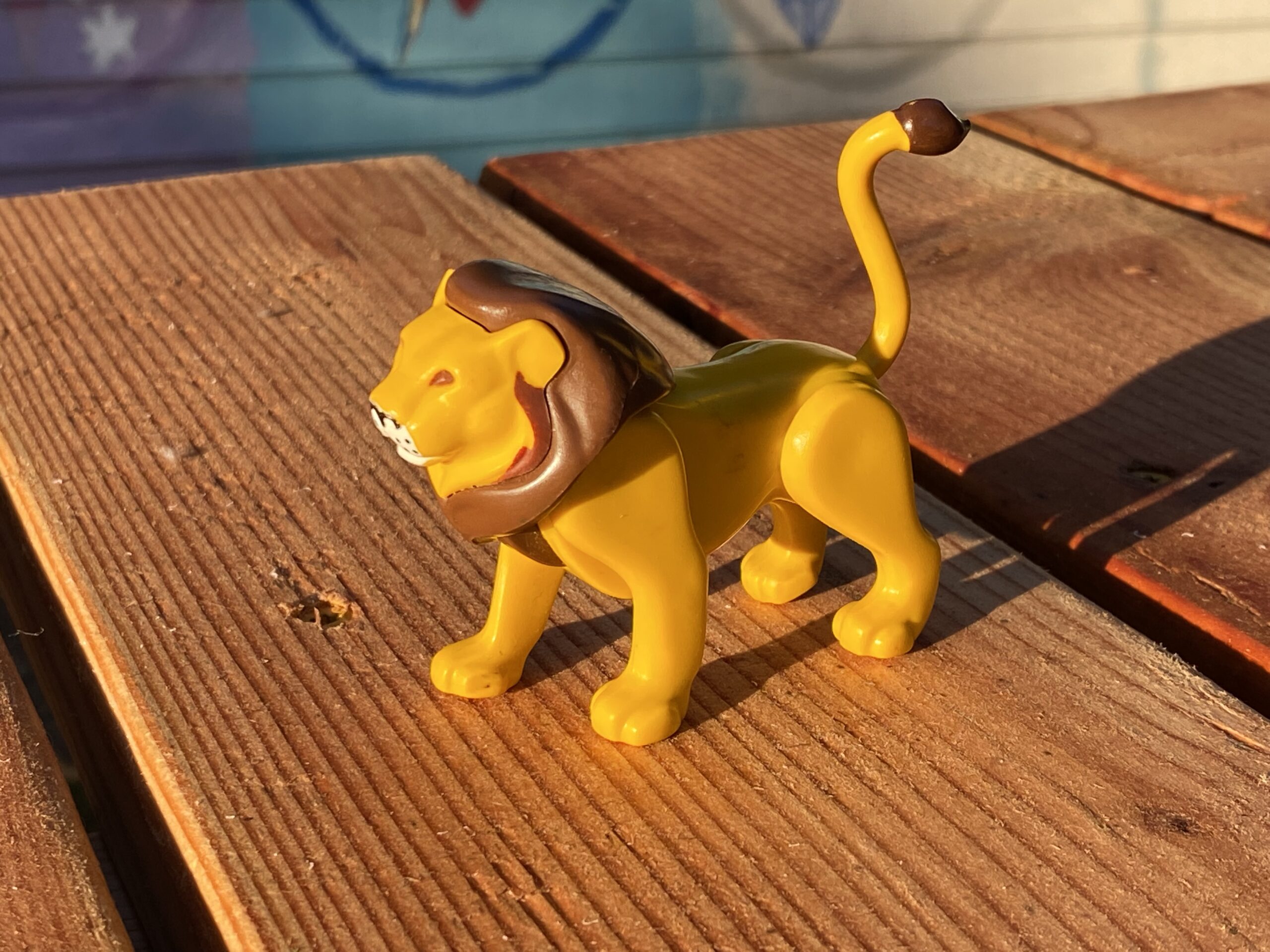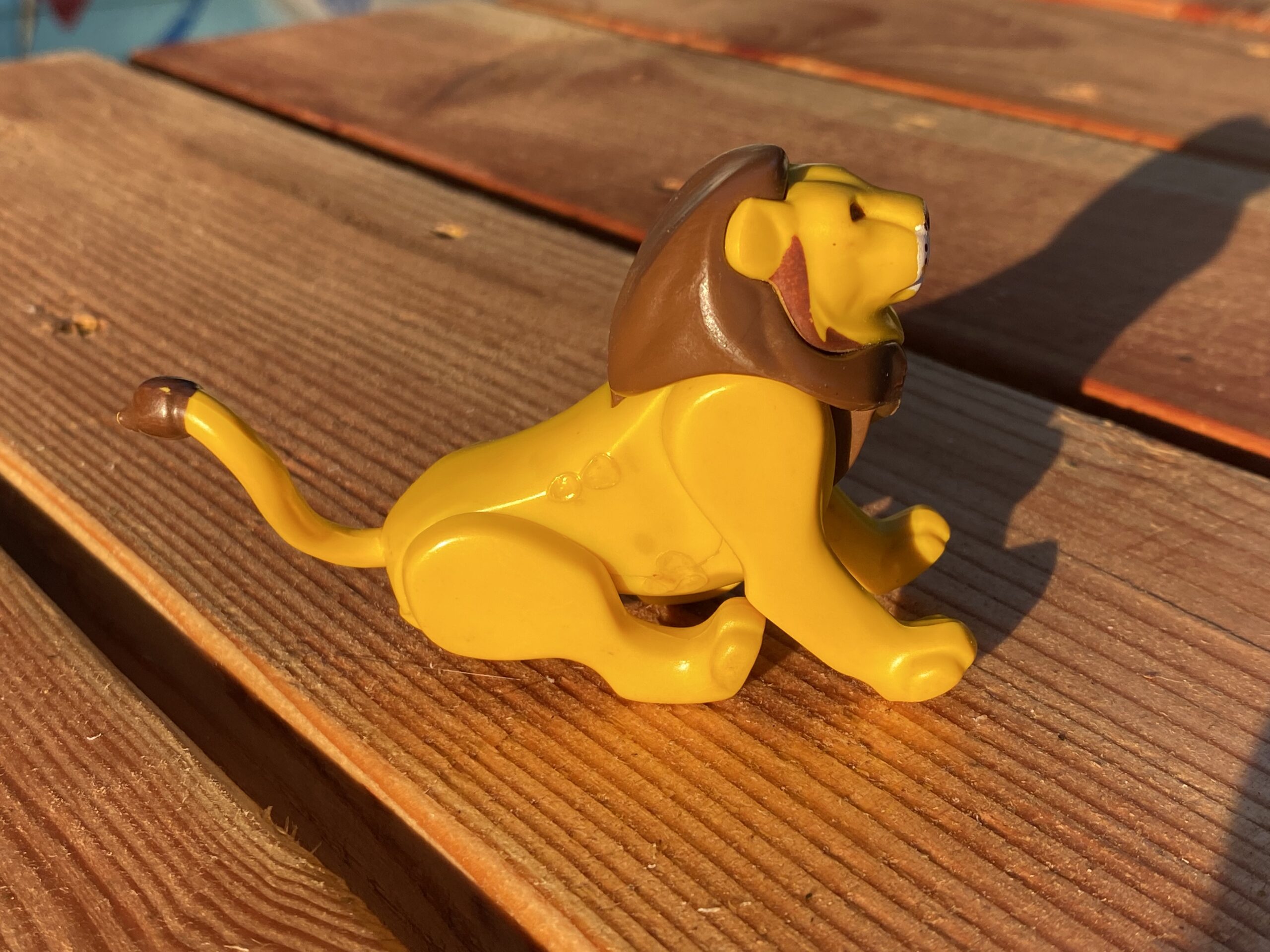XRF test results for a vintage Fisher Price brand plastic toy lion from the circus train set (made in Hong Kong): positive for Lead, Cadmium, Arsenic and Antimony
Introduction (for those new to this website):
Tamara Rubin is a federal-award-winning independent advocate for consumer goods safety and a documentary filmmaker. She is also a mother of Lead-poisoned children, her sons were acutely Lead-poisoned in 2005. Since 2009 Tamara has been using XRF testing (a scientific method used by the U.S. Consumer Product Safety Commission) to test consumer goods for toxicants (specifically heavy metals), including Lead, Cadmium, Mercury, Antimony, and Arsenic. All test results reported on this website are science-based, accurate, and replicable. Items are tested multiple times, to confirm the test results for each component. Tamara’s work was featured in Consumer Reports Magazine in February of 2023.


 October 18, 2022 — Tuesday
October 18, 2022 — Tuesday
The toy lion pictured here tested positive for FOUR poisonous heavy metals: Lead, Cadmium, Arsenic, and Antimony. You recognize this lion, don’t you? Everyone of a certain age had this lion or their neighbor had this lion.
Many of the animal toys from these sets are actually Lead-free. I have tested probably HUNDREDS of these vintage Fisher Price plastic toy animals (from the Circus set and the Farm set) over the years — and have not reported on very many yet because I am reluctant to inadvertently “misinform” people. (What I mean by that is I have learned no matter how much care I take to be explicit and clear, a certain percentage of readers out there will invariably misinterpret my findings. Were I to report that any particular example of a toy lion like this tested negative for toxicants, for instance, some folks tend to skim and generalize, then might dangerously assume ALL toy lions like this are negative for toxicants when that is simply not the case!) Readers often extrapolate when things are safe (when they shouldn’t), and many Lead Safe Mama readers haven’t yet learned how to extrapolate when some things might be unsafe (when I think they should be able to)!
As an example of the first paradigm:
White Dishes should NEVER be assumed to be Lead-free.
Someone once tested some white dishes and stated they were Lead-free and they started a myth that is now enculturated: people assume that white dishes are more likely to have lower levels of Lead (they assume safety). This is simply not true (there are many white dishes with incredibly high levels of Lead and there are also many examples of colorful dishes by brands who make sure their products have a low/safe level of lead)… I have worked with several families whose children have been poisoned by their dishes, and in most of those cases, the dishes were plain white of one kind or another. People assume safety when they shouldn’t, because the basis for their perception is a misunderstanding/myth based on lazy reporting or on the reader not taking the time to read something fully and understand it.
An example of that second paradigm:
Franciscan dishes ALWAYS should be considered unsafe for food use.
Every single example of vintage Franciscan China pieces (of all origins and all materials) that I have EVER tested has been positive for unsafe levels of Lead — yet people still don’t want to believe their pattern is unsafe until I have tested that exact pattern; folks should (at this point) understand it is reasonable to extrapolate the vast body of findings on that particular brand to every example from that brand… that they are all unsafe for food-use purposes! (Here’s a link to that category on the website.) People assume safety when they shouldn’t because they don’t want to know something is toxic. They have too much invested in that thing and want to believe their object is safe. (This often rings true even though everything in that category is unsafe; another example is Lead fishing weights — they should never be assumed to be safe. There is never a safe Lead fishing weight in any application. Period.)
I don’t know if I have done a good job of explaining that, but I have tried. 🙂
Back to the vintage Fisher Price circus animal toys:
Some are safe, and some are not, but the defining characteristics of which specific toys fall into which category are unclear. I really don’t want people to assume that ANY example of these toys might be safe (in the absence of testing a specific toy), because so many of them are unsafe — and not just unsafe, but often testing positive for very high levels of the specific toxicants found!
- Literally, about half the time these Fisher Price animal toys are positive for multiple toxic heavy metals, and half the time they are negative!
- Because they are not marked with the year made, it is not possible to know how to classify (or describe to you) which ones might be unsafe for children and which ones are safe (some that appear identical will have completely different toxicant profiles)!
- Consequently, I stick by my old standard on this matter (in terms of advice):
- In general, in the absence of independent testing being done on a specific toy (testing demonstrating safety, testing done on your toy, your exact toy, the one you have sitting in your living room), vintage plastic toys should be avoided at all costs (children should not be allowed to play with them — especially children who may be inclined to put toys like this in their mouths).
- Even Fisher Price has made several public statements acknowledging the fact that their vintage toys are not safe for children to modern standards. You can read their public statements in this article.
- To see more Fisher Price toys that I have tested, click here.
To reiterate in simplified terms (just about the lion):
- This doll was positive for four toxic heavy metals.
- Many dolls that look exactly like this doll are completely negative for heavy metals.
- Do NOT assume that these dolls “may be safe.”
- In the absence of testing being done for the specific version of this exact doll that you have at your home, assume you have one of the toxic ones.
- Keep these away from children.
- Even the manufacturer has stated publicly that you should keep these vintage toys away from children.
- ~ end ~
Below is a full set of XRF test results for the vintage toy lion pictured.
Reading #1) on the yellow plastic body of the lion
60-second reading
Readings repeated multiple times to confirm the results
- Lead (Pb): 4,367 +/- 59 ppm
- Cadmium (Cd): 215 +/- 12 ppm
- Tin (Sn): non-detect
- Mercury (Hg): non-detect
- Selenium (Se): non-detect
- Barium (Ba): 497 +/- 116 ppm
- Arsenic (As): 153 +/- 34
- Chromium (Cr): 960 +/- 69 ppm
- Antimony (Sb): non-detect
- Nickel (Ni): non-detect
- Copper (Cu): non-detect
- Zinc (Zn): 390 +/- 14 ppm
- Titanium (Ti): non-detect
- Manganese (Mn): non-detect
- Bromine (Br): non-detect
- Indium (In): non-detect
- Bismuth (Bi): 31 +/- 17 ppm
- Zirconium (Zr): non-detect
- Niobium (Nb): non-detect
- Iron (Fe): non-detect
- Gold (Au): non-detect
- Cobalt (Co): non-detect
- Tungsten (W): non-detect
- Platinum (Pt): non-detect
- Chlorine (Cl): non-detect
- No other metals were detected in consumer goods mode.
Reading #2) On the brown mane of the lion
60-second reading
Readings repeated multiple times to confirm the results
- Lead (Pb): 2,493 +/- 69 ppm
- Cadmium (Cd): 607 +/- 18 ppm
- Tin (Sn): non-detect
- Mercury (Hg): non-detect
- Selenium (Se): non-detect
- Barium (Ba): 1,314 +/- 81 ppm
- Arsenic (As): non-detect
- Chromium (Cr): 492 +/- 196 ppm
- Antimony (Sb): 51 +/- 21 ppm
- Nickel (Ni): non-detect
- Copper (Cu): 53 +/- 32 ppm
- Zinc (Zn): non-detect
- Titanium (Ti): non-detect
- Manganese (Mn): non-detect
- Bromine (Br): 13 +/- 7 ppm
- Indium (In): non-detect
- Bismuth (Bi): non-detect
- Zirconium (Zr): non-detect
- Niobium (Nb): non-detect
- Iron (Fe): non-detect
- Gold (Au): non-detect
- Cobalt (Co): non-detect
- Tungsten (W): non-detect
- Platinum (Pt): non-detect
- Chlorine (Cl): 360,000 ppm
- No other metals were detected in consumer goods mode.
Reading #3) On the lion’s white nose
60-second reading
Readings repeated multiple times to confirm the results
- Lead (Pb): 2,882 +/- 83 ppm
- Cadmium (Cd): 709 +/- 20 ppm
- Tin (Sn): non-detect
- Mercury (Hg): non-detect
- Selenium (Se): non-detect
- Barium (Ba): 1,166 +/- 76 ppm
- Arsenic (As): non-detect
- Chromium (Cr): non-detect
- Antimony (Sb): non-detect
- Nickel (Ni): non-detect
- Copper (Cu): 58 +/- 36 ppm
- Zinc (Zn): non-detect
- Titanium (Ti): 157,900 +/- 4,000 ppm
- Manganese (Mn): non-detect
- Bromine (Br): 19 +/- 7 ppm
- Indium (In): non-detect
- Bismuth (Bi): non-detect
- Zirconium (Zr): non-detect
- Niobium (Nb): non-detect
- Iron (Fe): non-detect
- Gold (Au): non-detect
- Cobalt (Co): non-detect
- Tungsten (W): non-detect
- Platinum (Pt): non-detect
- Chlorine (Cl): 360,000 ppm
- No other metals were detected in consumer goods mode.
Never Miss an Important Article Again!
Join our Email List
















Thank you as always for your diligence in testing and reporting, Tamara! I am glad you put things in black and white, and at least TRY to teach people how to extrapolate properly. As an added precaution (and because humans are so often “dummies” (we can’t help it, it seems!)) could you perhaps put this warning in a separate text box in your post, or somewhere else on your website? This:
“In general, in the absence of independent testing being done on a specific toy, vintage plastic toys should be avoided at all costs (children should not be allowed to play with them — especially children who may be inclined to put toys like this in their mouths.)”
You are right though, humans will still probably want to know “what about THIS one?” haha!
Hi Kath! I tried to clarify this but I think I may have mucked it up. Can you read it through one more time (if you have time) and see if it makes more sense now? Thank you!
There Kath! I made up the graphic for you! 🙂
T
Very concerning about the lead and other toxic metals in the lion figurine. We actually have it. Now wondering about all the small toys from McD’s, Disney molded figurines from 30 years ago. FP wood puzzles, Tupperware Noah’s Ark, Match Box cars are all concerning me. Saved many for my grandkids. Do you have any info on these items? Or where can I send it for your Museum of Lead Products.